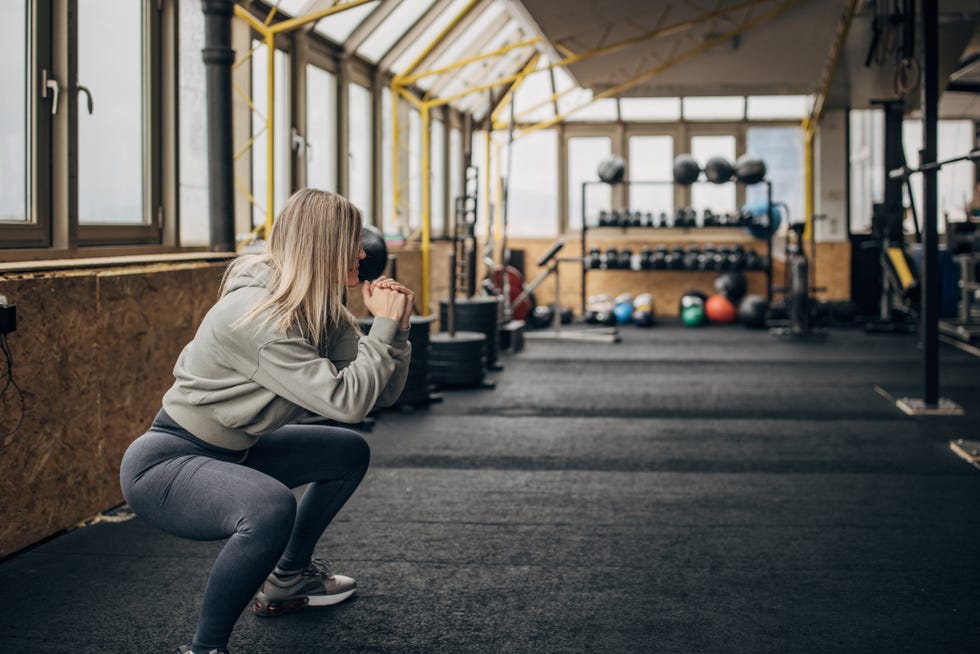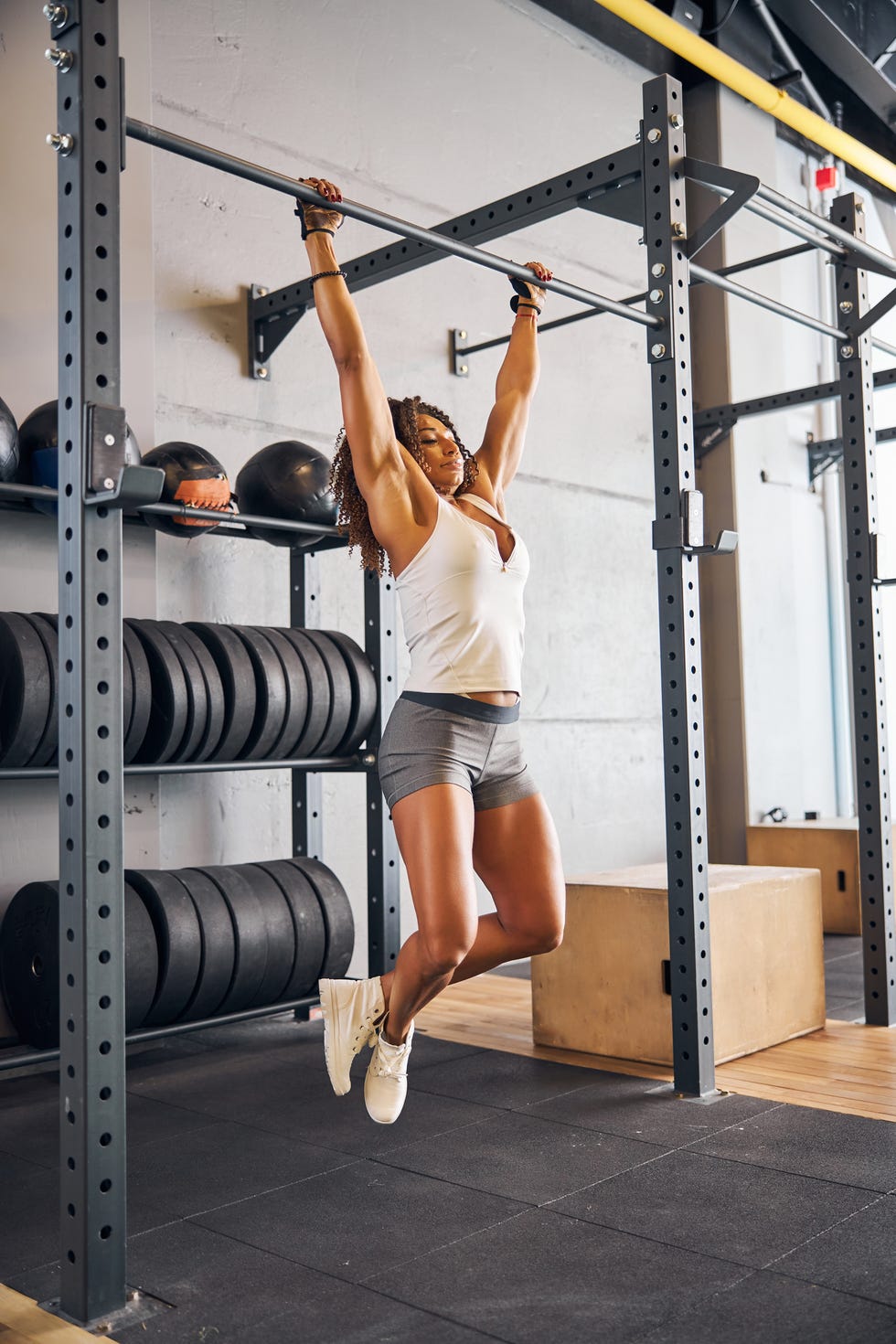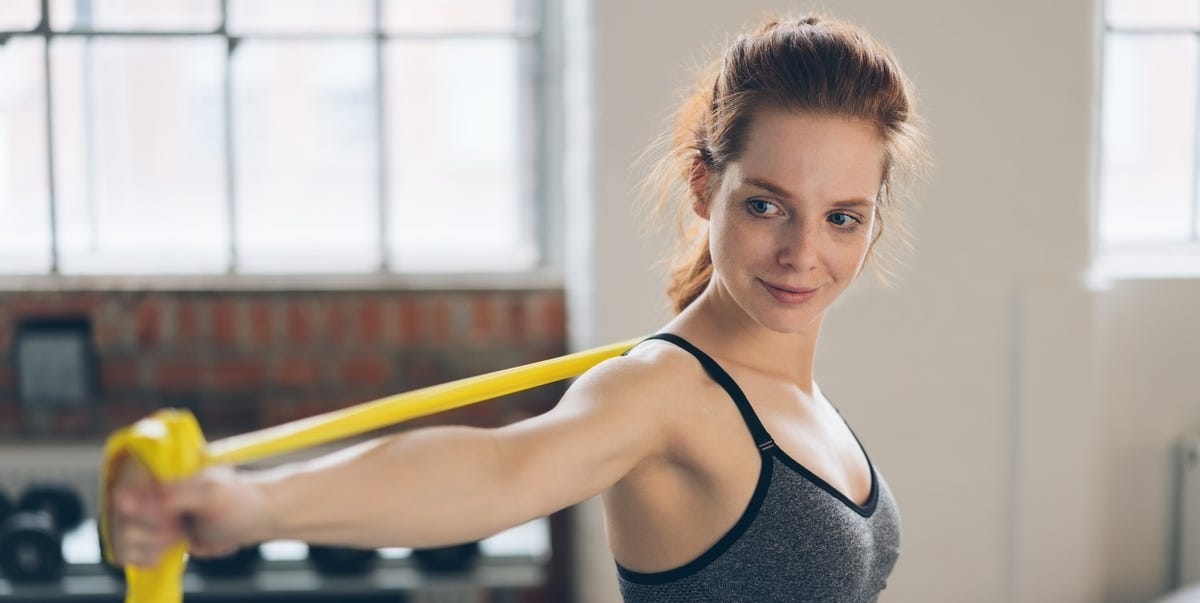If you tend to make a beeline for the treadmill the moment you set foot in the gym, regardless of what your session looks like, you definitely aren’t the only one. For many, it’s a habit forged from years of having to run laps of an uneven field ahead of a school PE lesson.
It’s widely accepted that doing a little cardiovascular activity before moving in to your workout is a decent enough method, and sometimes that is absolutely the case. But, once you dig into what you actually need to achieve by warming up your body before strength training – and what the whole point of it is – you may realise that jogging isn’t the most effective way to prime your body to lift weights.
Warming up isn’t just about increasing your heart rate and getting the blood flowing. It’s about ensuring your body is ready for what comes next, so you have the best chance at doing your workout to the best of your ability while minimising injury risk. Unsure where to start? Here, personal trainer Andy Vincent breaks down exactly what you need from a solid warm-up ahead of your weights session.
What’s the purpose of a warm-up?
Essentially, a warm-up is intended to prepare your body for the movement that follows, specifically when you’re training above your baseline activity – whether weight lifting, doing HIIT, or any other type of physical activity. ‘During a workout, the tissues are going to be taken to a much greater force development requirement. The muscles will need to stretch and contract under load, so we want to make sure that we prepare the tissues for that,’ says Vincent.
Another element of warming up is getting the central nervous system (CNS) engaged and activated. Your CNS is responsible for initiating and controlling muscle contractions so, you can imagine, it’s extremely helpful to prep it for what’s to come in your training session. ‘Muscle activation with a mini band is something of a hot topic, but what we care more about is movement preparation,’ says Vincent. ‘Having joints coordinated and stabilisers starting to work.’
You weren’t misled: improving blood flow and raising your body temperature is key before a workout. ‘Muscle becomes more pliable, like elastic, when it gets warmer,’ Vincent says. This enhances performance and reduces injury risk.
Finally, warming up helps to improve your mental focus. It gets you ready and in the zone, mentally, to train, and reduces distraction.
 Hirurg
Hirurg
Warming up boosts blood flow and makes muscles more pliable – helping improve performance and reduce injury risk
Is it ever OK to skip a warm-up before weights?
Do you always have to do a warm up before you workout? Not always, according to Vincent. But, it really depends on the circumstances.
‘There is some research that shows that potentially warming up could be more detrimental than positive. That being said, I would feel uneasy making someone go into a strength workout without doing some sort of movement prep beforehand,’ he adds.
So, when is it OK to bypass? If you’re doing high reps, and therefore lifting lighter loads, doing movements that aren’t all that complex, Vincent gives you the green light to skip your warm-up. ‘If I was going to do an abs and arm workout, I’m not warming up. There’s absolutely no point,’ he says.
If, however, your rep ranges decrease to 8 or less – and therefore the load increases – he advises priming your body before you lift. ‘If I’m doing low-rep training, then I want to make sure that I prepare myself simply because the amount of external load is going to be so much greater than it would be if I was doing 12, 15, or 20 reps,’ Vincent says. ‘Even if someone’s doing 20 reps of a leg press, it’s not going to be that heavy. If you come down to 6 reps, it’s going to be significantly heavier.’
Lifting experience can also influence how you warm-up, simply because you’re more aware of what your body needs going into a training session. ‘For example, I know that if I’m doing horizontal pull variations, I don’t really need to warm up for it – I don’t feel any better for it,’ Vincent says. ‘Whereas, if I’m doing pressing movements, then I would need to. Additionally, your injury history will help inform when you need to warm-up. ‘I’ve had a back injury, an ankle injury and a shoulder injury, so if I’m working through a joint that I know has a previous history of injury, I’m going to want to warm-up,’ Vincent says.
In summary, unless you’re doing high-rep training with light weights, you probably need to warm-up first.
Should you do a treadmill warm-up before weights?
‘Warming up on any piece of cardiovascular kit is certainly not essential,’ Vincent says. Getting heat into your body via cardiovascular training isn’t always a requirement before lifting, he clarifies.
That said, there are scenarios when it can be incredibly useful – including if you tend to train early in the morning. ‘If I have a client that I know is going to be training early, and they’re getting straight out of bed, sitting in a car and going to the gym, and their body hasn’t really woken up and they aren’t yet alert, then it can be nice to do a cardio warm-up,’ Vincent says. This is because, generally, the most complex and demanding exercise is done first in a training session, for when you typically have the most energy and your muscles aren’t fatigued from other lifts. However, if you’re sleepy going into a session, it may take you a couple of exercises to settle in and feel more awake. In this case, a short cardio warm-up can help you feel ready and primed from the start of your workout.
Separately, if you just enjoy beginning your training sessions with a burst of cardio – that’s totally OK.
Related Story Should you do a stretch before weights?
Honestly? Static stretching before strength training is probably pointless, in most cases. This kind of ‘warming up’, Vincent says, has been associated with increased risk of injury. ‘There’s research that shows doing long, static, holds of 90 seconds to two minutes before a jump squat reduces force output. But, no one’s doing a two-minute hold and then instantly going off and trying to jump,’ he says. ‘But, that being said, mechanistically I don’t see the point in doing static long holds.’
The only exception? If you have very limited range of motion through a movement pattern you’re going to be doing in your session. ‘If you’ve got very, very tight calves, or very tight ankles and you’re squatting, then a static hold could be useful. Or, if someone doesn’t have the ability to go into shoulder flexor, it would make sense to do some work to open out that range of motion,’ Vincent says. ‘Otherwise, I put most of my focus on two more active forms of mobility.’
 yacobchuk
yacobchuk
Dead hangs help open up tight shoulders and improve range of motion before pressing exercises
What makes a good strength training warm-up?
There are six steps to work through when figuring out what your ideal warm-up looks like (but, don’t worry, it’s not as complicated – or time-consuming as it sounds).
1/ Consider your limitations
The first step is to consider your limitations – any areas of previous injury or reduced mobility that may need specific attention.
‘If someone knows they’ve got a history of back injury, for example, they will therefore want to make sure they have mobilised their spine and addressed restriction in the shoulder, restriction in the ankle and restriction in the hip,’ Vincent cautions. ‘Then, you would mobilise specifically for your own limitations.’
Of course, in order to warm-up for your limitations you need to know what they actually are – and not all of us do so. Vincent says this step is not always going to be applicable to everyone.
2/ Warm up for the specific demands of the session
‘Logically, I don’t need to warm-up my legs if I’m going to do an upper-body workout, and vice versa,’ says Vincent. ‘So, think of the demands of the workout and mobilise accordingly.’ Warming up the hips and ankles is a good place to start if you’re going to be doing squats, for example.
3/ Do some general dynamic movement
This step isn’t essential, particularly if you’re doing a limitation- and session-specific warm-up, but can be good to have in your back pocket – especially so if you’re doing a group training class, for instance, and are unsure of what the workout will entail.
‘The nice thing about dynamic movement flows is that they can be quite good for getting the heart rate up and driving blood flow without cardio,’ Vincent says.
You may know dynamic movement as the more generally named mobility training. In short, it involves doing exercises that improve your range of motion.
Research published in Arthroscopy, Sports Medicine, and Rehabilitation this year revealed that dynamic warm-ups play a ‘pivotal role in injury prevention by preparing the body both physically and mentally for physical activity.’
4/ Decide if you want to do cardio or not
Cardio before strength training, as we’ve already covered, is optional. It’s not necessary, but if you enjoy doing it or experience benefits such as increased alertness from doing it, that’s totally fine.
5/ Consider doing some plyometric work if you’re going to be lifting heavy
‘Lots of people use mini bands to activate the muscles, but another great option is to move your body a bit quicker,’ says Vincent. ‘Doing things like hops, bounds, med ball slams and other power-based movements can be a really nice way to prepare someone – especially if they’re going to go and do something that’s very explosive or they’re going to be lifting heavy.’ This type of movement is again optional, but gets the CNS firing.
6/ Do some ramped warm-up sets
Vincent’s bread and butter where warming up for strength training is concerned are ramped sets. This is where you prime your body for the main exercise by performing the exercise at a much lighter load, and gradually working up. So, you may warm up for heavy deadlifts by first doing the movement with an empty barbell, before gradually increasing the load for a few sets until you reach the programmed load for your session.
Warm-up exercises to try today
Looking for some inspo ahead of your next strength training session? Vincent recommends trying this general dynamic movement flow, and tweaking to accommodate your limitations and upcoming session.
‘It runs through the principle that I discussed where I do a bit of static work based on my own limitations, then I do some active work, starting to move through ranges of motion, and then onto a dynamic movement flow,’ he says. ‘I consider this type of thing to be very general – yes, I’m getting some ankle ability, yes, I’m getting some hip mobility, yes, I’m getting some spinal rotation, but it’s not bang-on specific.’
Related Stories

